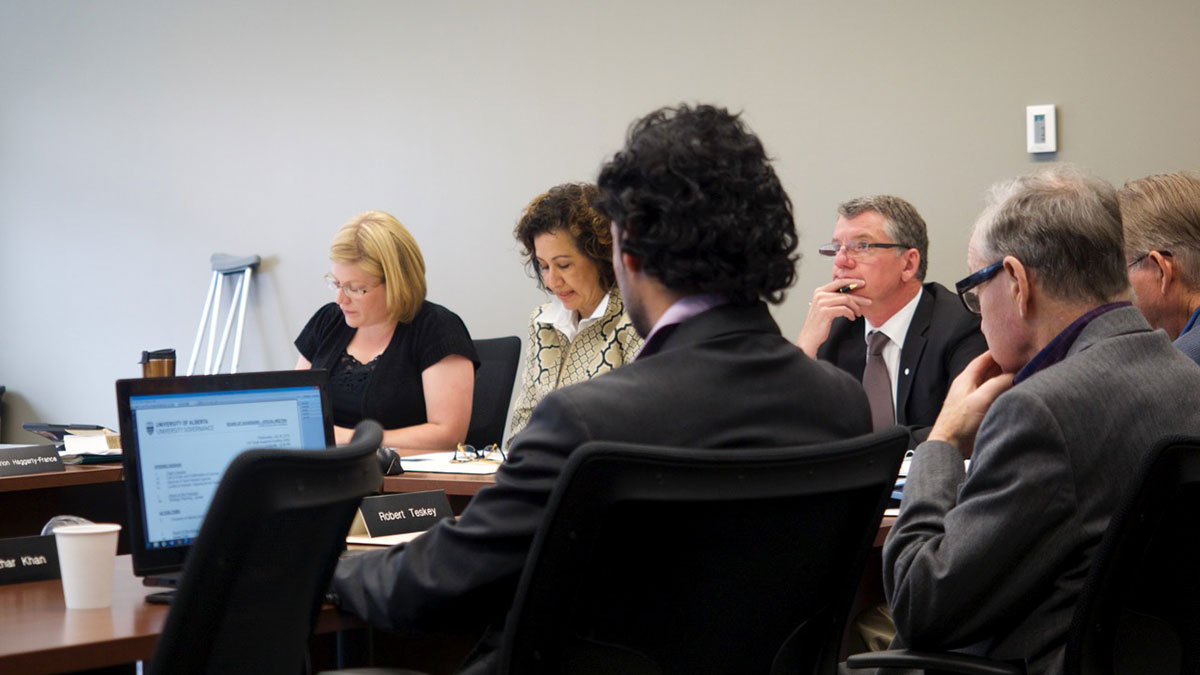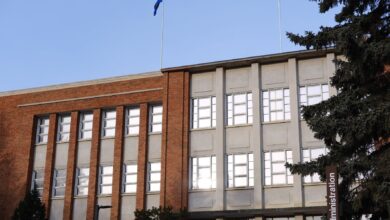Board of Governors uneasy about staff salaries as university costs outpace revenues
 Christina Varvis
Christina VarvisConcerns about the University of Alberta’s academic sustainability are creeping into the minds at the Board of Governors members. If the university continues on its current financial trajectory, students can expect to see fewer academic staff in the long term.
The board, which is the highest decision-making body at the university, approved of the university’s audited 2015-16 financial statements in its June 17 meeting. The reports showed an excess of $33 million after costs were subtracted from revenues, down from 2014-15’s excess of $75.3 million. The U of A’s 2016 budget, or comprehensive institutional plan, projects that the annual excess will shrink every year until the university’s costs surpass its revenues in 2019-20. Staff salaries and benefits make up the largest proportion of university costs at 60 per cent.
University President David Turpin said at the board meeting if expenses are going up more than revenues, and expenses are driven by people, the “arithmetic’s pretty simple” — staff costs will need to be restricted.
University Senate board representative Barry James cited his background in finance and said growing expenses and stagnant revenues suggest the university is in a state of “growing concern.”
“As an accountant, I don’t see this as sustainable beyond a certain period of time,” James said at the meeting.
Robert Teskey, a board member from the public, said the university is in a difficult position as the budget is essentially balanced by reducing the number of new hires.
“We don’t have the resources to hire new, young, people,” Teskey said. “It’s the new, young people, who have promise for the future, who are our future. I worry less about what’s happening today than I do about where we’re going to be in 20 years from now, when the people who would have come in as post-docs haven’t come in and, as a result, they become stars somewhere else.”
Turpin responded that part of the university’s solution to the problem of hiring teaching staff has been to transfer the responsibility of merit and pay increases onto faculties. In past years, central administration was financially responsible for professors’ pay and increases.
“By moving the responsibility, faculties and departments will be aware that if there is an across-the-board increase (in pay), there are trade-offs being made,” Turpin said. “As we move into the next couple of years … the laws of nature where every action has an equal and opposite reaction are going to be understood when it comes to the relationship between salaries and the production of positions.”
Academic staff board representative Jeremy Richards said he found it “troubling” that the number of academic staff positions is the solution to the U of A’s financial problem. Designating salaries as the responsibility of departments and faculties isn’t a solution either, he added, as the problem is that the university’s entire budget is restricting hiring.
“It’s not sustainable,” Richards said.
Academic staff representative David Cooper said faculties can reduce costs by reducing the number of full-time academic staff and to hire more sessional instructors — but sessionals only address the problem of undergraduate needs and do not add to the U of A’s research output.
“The difficulty is one on how to enhance the research capability of the university and at the same time as address the inevitable demands for greater access (to education) and have not too much of an increase in average classroom size,” Cooper said.
University Provost Steven Dew told the board that the U of A is looking into alternate revenue sources to balance costs that involve educational partnerships with the provincial government. President Turpin also said that possible solutions may lie with the U of A’s land trust, in which the university enters into long-term lease agreements with third parties for developing land. The trust is currently on hold until the Ministry of Education puts controls in place to manage alternate revenue for post-secondary.
In the past, the university relied partially on tuition increases to keep up with growing staff costs, but this is not an option as Alberta’s NDP government implemented a tuition freeze in the spring of 2015.
Robert Teskey closed the discussion on the U of A’s financial statements by voicing concern for the U of A’s quality in the future. Though the university won’t “dry up and blow away,” Teskey said once costs are cut, the situation will be very difficult to reverse.
“I’m not concerned about whether or not we’ll be around in 10 years,” Teskey said. “I’m concerned about whether we’ll be around in a form that is going to be something we can be proud of.”





University of Alberta operating costs are estimated to increase at approximately 4% per year, but revenues have been well below that for several years. The University has avoided running actual deficits (it is prohibited from doing so by legislation) for the last several years by making cuts to services and staff numbers, and deferring maintenance. This clearly is not sustainable, as pointed out by Board members. The University plans to fill this budget shortfall by new forms of revenue generation, but it is unclear what these will be. By passing down the responsibility for meeting negotiated salary increases to faculties, the President suggests this will make “faculties and departments … aware that … there are trade-offs being made” (your quote). It does indeed, but it’s unclear what faculties and departments can do about it. Perhaps we will move to a US model where, in many universities, faculty only get paid for 8 or 9 months, and have to make up their remaining salary elsewhere. Sure to improve the student experience!
But the reality is that, unless Deans and Department Chairs can miraculously annually come up with compounding new money to pay for reasonable salary increases, the University will slowly shrink, or decline in quality, as Robert Teskey fears. Alternatively, perhaps taxpayers might like to adequately support their universities. A PST would solve the problem instantly.